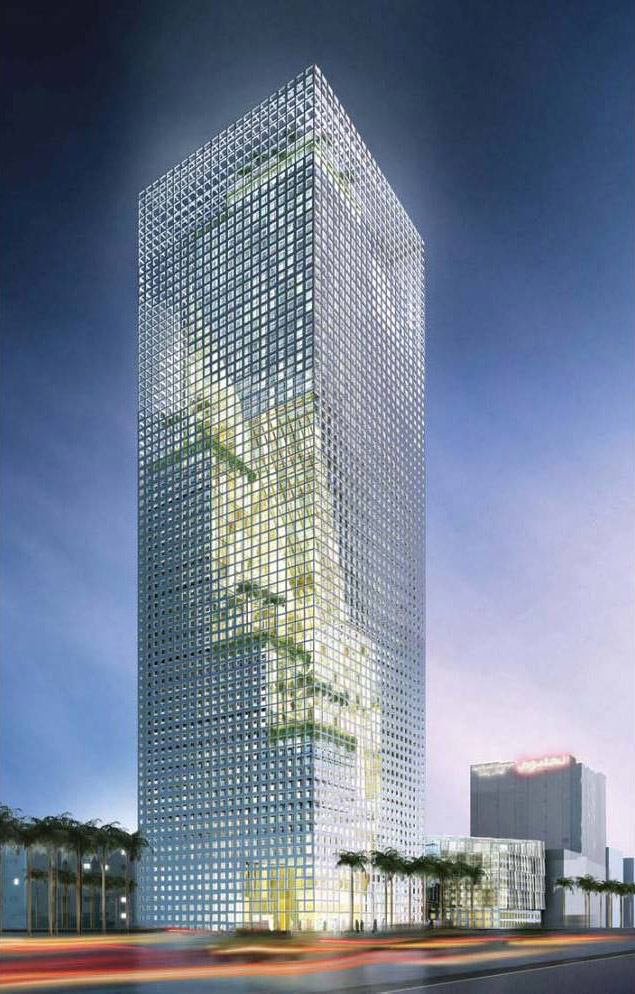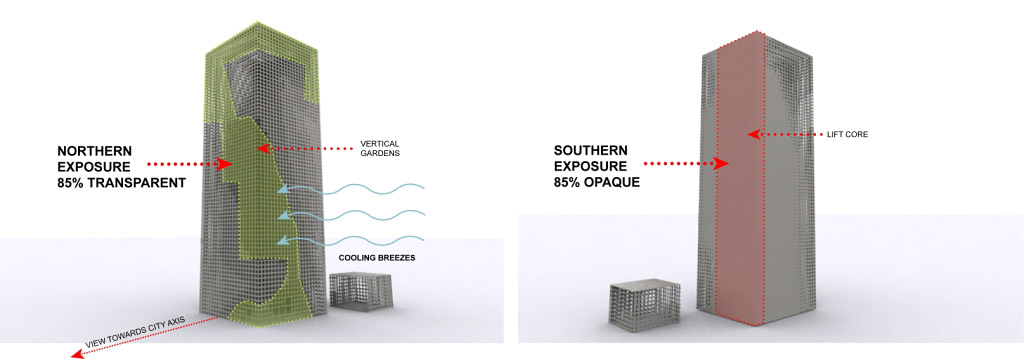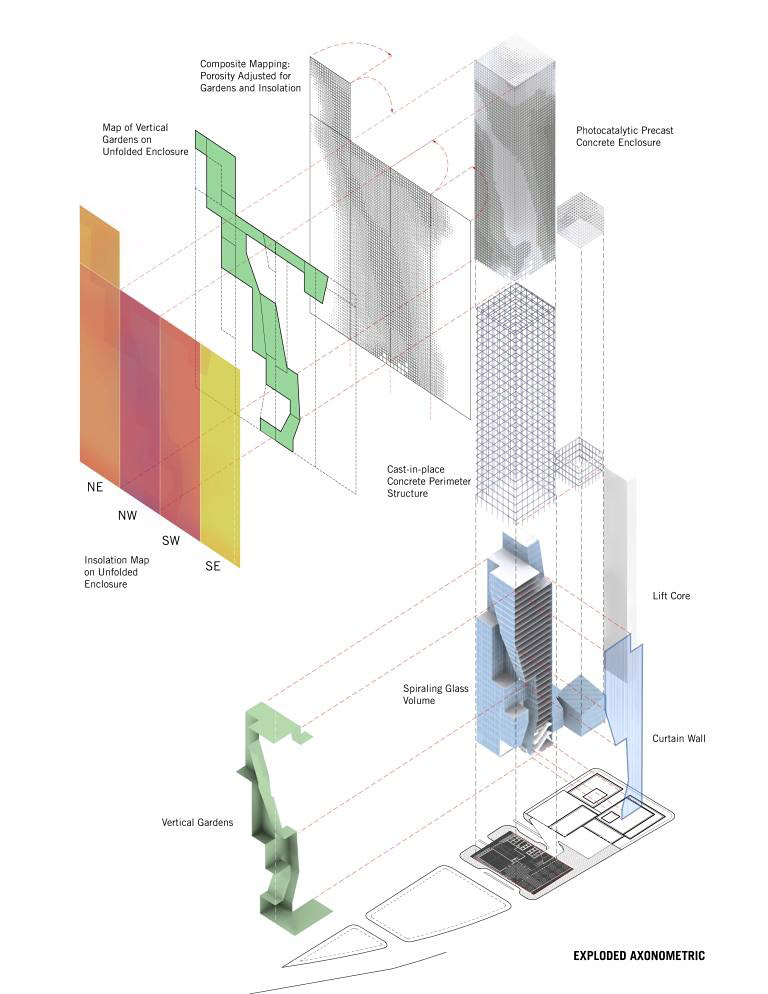
Image 1. A night view of the design showing the shading envelope and the spiraling forms behind. Copyrights: Perkins+Will
In February 2010, the design for Al-Birr Foundation Headquarters in Riyadh, Saudi Arabia, has been named as the winner of the 2010 Architectural Review / MIPIM Future Projects Awards under the ‘tall buildings’ category (Image 1). The unbuilt project, designed by Perkins+Will’s New York Office, was commissioned for Al-Birr Foundation, a non-profit organization aimed at alleviating poverty and caring for disadvantaged families and children.
The Design
Of the many features of the design of the 59, 000 sqm tower, perhaps the most interesting is how it was concieved as a sustainable urban tower that responds to the environmental characteristics and the microclimate of the city of Riyadh, which is a challenging climate to address given the extreme solar exposure and the heat conditions of Riyadh.
Faced with these climatic conditions and a deep plot of 1000 x 1200m, the projects’s designers response was to rethink the high rise typology in this context. The design’s most visible response to the climate is the building’s envelope which was designed as a large rectangular frame of brise-soleil enclosing the occupied parts of the building. This shading frame was designed to respond to both the different amounts of solar radiation received by each elevation as well as the interior spaces behind it. To achieve this result, a mapped shading mesh was devised to provide varying levels of openness for different locations of the different elevations depending on its solar exposure and its spatial/contextual influences. The result was an envelope that resembles a mesh of varying densities surrounding the building and simultaneously protecting and revealing the activities behind it.
This proposed design solution thus helps the building reduce its solar heat gain while maintaining its views towards the city (FIgure 1). In addition to this shading effect, the mesh-like dynamic treatment of the envelope has also helped animate the building’s expression with the dense and sparse zones of the facade adding a dynamic effect to what otherwise may have become a static pure form.
This response to solar radiation , as well as the manipulation of larger to smaller opening as a light control measures, appears to be inspired by the the traditional Middle Eastern ‘mashrabiya’, or wooden latticework screen. This traditional design element is most common in Iraq, Egypt, Saudi Arabia,and the Levant where it was often used to screen windows from direct sun light, to improve lighting quality through diffusion, and to improve privacy while maintaining views to the outside.
In addition to the envelope, the glazed office spaces behind the elaborate envelope are carved into a spiral that wraps around creating spiraling roof spaces that serve as shaded and naturally ventilated courtyard gardens for the building occupants (Figure 2.). The openings within the envelop respond to these gardens with wider mesh openings to encourage cooling breezes.
The design’s emphasis on reducing solar exposure is commendable not only as it represents a shift from the standard approach of importing standard US office building designs of deep floor plates and unshaded glazed envelopes, but mostly since it heralds the long awaited development of local environmentally and contextually responsive design in the Middle East that learns from -but is not limited to- traditional design elements and strategies of the region.
Karim Elgendy is an architect and a sustainable design researcher based in San Francisco. He can be contacted at: Karim [at] Carboun [dot] com
To discuss this article, please join Carboun’s vibrant discussion group on Linkedin. For news and updates on sustainability from around the region, join Carboun’s Facebook page or follow its Twitter feed.


